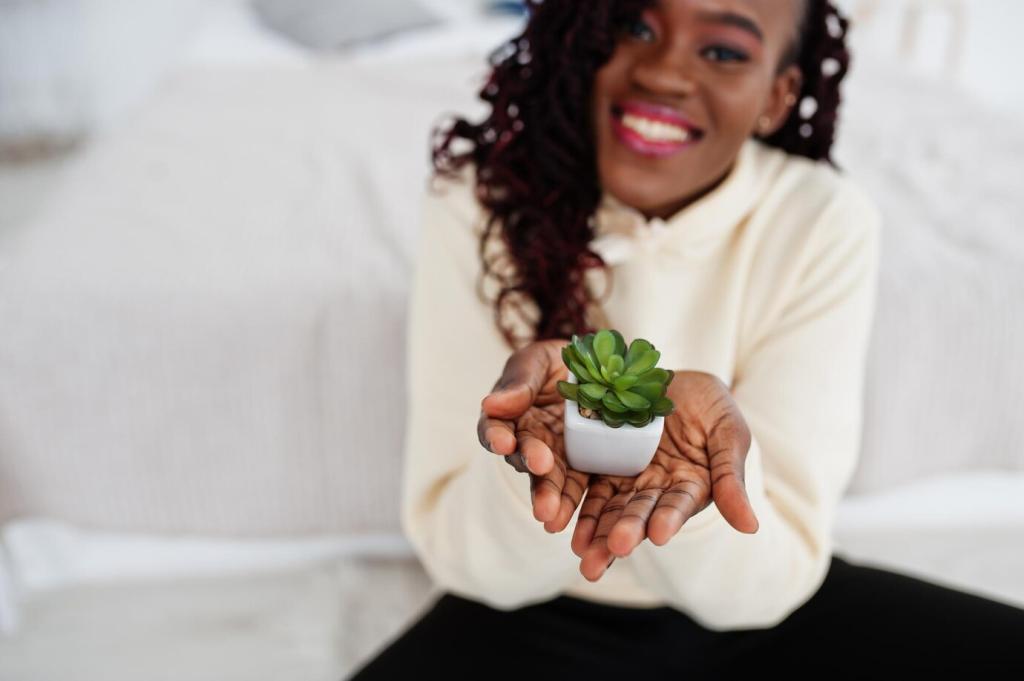Greener Shine at Home: Eco-Friendly Cleaning Products for Furniture
Green Chemistry 101 for Furniture Care
Plant-based surfactants, explained
Many eco cleaners rely on plant-derived surfactants like alkyl polyglucosides from sugar and coconut, or saponin-rich soapberry extracts. These agents lift soil gently, rinse cleanly, and tend to be biodegradable, helping you protect delicate finishes while reducing downstream environmental impact.
What certifications actually mean
Labels such as EPA Safer Choice, Green Seal, and ECOLOGO help identify products that meet rigorous criteria for human health and environmental safety. Look for transparent ingredient lists, fragrance-free options when possible, and packaging that supports refills or concentrates to minimize waste.
Avoiding hidden irritants
Conventional furniture cleaners may include high-VOC solvents, harsh preservatives, or strong synthetic fragrances that linger. Eco-friendly alternatives prioritize low-VOC carriers, gentler preservatives, and essential oil options used sparingly. Always patch-test to protect finishes and avoid reactions on sensitive surfaces.
Safe, Sustainable Care for Wood
Daily cleaning without dulling the finish
Dust regularly with a soft, reusable microfiber cloth to reduce abrasion. For routine cleaning, use a few drops of mild castile soap in warm distilled water, wrung out well. Wipe with the grain, dry immediately, and never let moisture pool along joints, edges, or veneers.
Conditioning with natural waxes and oils
Beeswax and carnauba-based balms with plant oils like jojoba can enrich luster without synthetic silicone shine. Apply sparingly, let it set, then buff to a soft glow. Avoid heavy oils that can yellow or attract dust, and always confirm compatibility with your wood’s existing finish.
Story: the rescued thrift-store dresser
We found a scratched oak dresser with a weary finish and stubborn haze. After a gentle plant-based clean and a thin beeswax application, the grain awakened beautifully. The transformation felt like uncovering a family story—proof that patient, eco-friendly care can revive furniture with heart.

Leather Loved, Not Smothered
Use a slightly damp cloth and a pH-balanced, plant-based leather cleanser. Avoid ammonia, chlorine, and vinegar, which can damage dyes and finishes. Work in small sections, never oversaturate, and dry with a soft cloth. Test seams or undersides first, especially on aniline and vintage leathers.
Leather Loved, Not Smothered
Choose conditioners featuring carnauba, plant oils, or balanced lanolin blends used sparingly. Heavy oils can darken or soften leather excessively. Apply a thin coat, allow absorption, then buff for a mellow sheen. This slow, simple ritual extends leather life while keeping scent and residue minimal.
Leather Loved, Not Smothered
A scuffed, sun-dry chair sat lonely in a corner. Two brief sessions with a gentle botanical cleanser and a light conditioner restored depth and pliability. The grain’s natural drama returned, and so did our affection. Subscribe for our step-by-step leather care checklist and seasonal reminders.

Mix distilled water with a small amount of cleaning vinegar or citric acid solution for sparkling glass. Spray onto a cloth, not the surface, to avoid drips. Wipe in overlapping strokes, then finish with a dry, lint-free towel. Never use acids on marble or natural stone nearby.

A drop of plant-based dish soap in warm water cuts grease on stainless surfaces. Wipe along the grain with a soft cloth, rinse lightly, and dry immediately. For extra polish, use a tiny bit of food-grade mineral oil on a cloth, then buff until fingerprints fade.

Mixed-material furniture requires precision. Spray cleaners onto cloths, not directly, to prevent seepage into joints. Keep acids away from stone inlays, and avoid abrasive pads that scratch powder coatings. Share your toughest mixed-material puzzles in the comments so we can troubleshoot eco-friendly strategies together.


Indoor Air Quality and Wellbeing
Many traditional cleaning solvents release volatile compounds that linger. Low-VOC cleaners reduce harsh odors and help keep indoor air fresher. Improve ventilation while cleaning, close containers promptly, and consider fragrance-free formulas if you or loved ones experience sensitivities, headaches, or seasonal respiratory challenges.
Indoor Air Quality and Wellbeing
If you enjoy scent, choose high-quality essential oils at very low concentrations. Some households, pets, and sensitive individuals react strongly, so prioritize ventilation and patch testing. Remember, a clean home does not need to smell strong—subtle, short-lived freshness is usually the healthiest sign.
Build Your Eco Cleaning Kit and Routine
Refills, concentrates, and tools that last
Choose concentrated cleaners to reduce packaging and shipping weight. Refill glass spray bottles, keep metal tins for waxes, and select brushes with replaceable heads. Quality microfiber cloths that survive hundreds of washes prevent paper towel waste while delivering excellent dusting and polishing performance.

